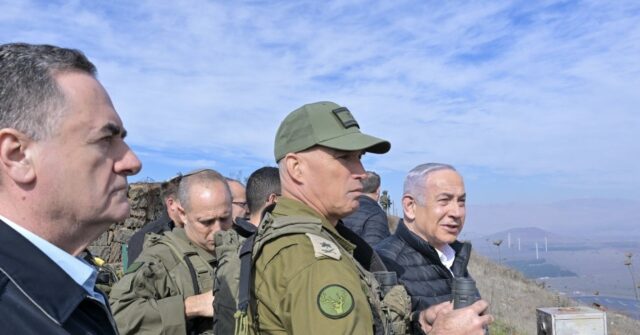Recent reports from Israel’s Army Radio indicate that the Israel Defense Forces (IDF) have seized control of the peak of Mount Hermon, marking a significant military maneuver amid the ongoing instability within Syria as the Assad regime appears to be collapsing. Mount Hermon, known for being the highest mountain in the Golan Heights region, holds strategic military importance due to its elevation and location. Traditionally, Israel has maintained a military base at the lower regions of the mountain while Syrian forces had a base at the summit. This recent seizure is historic as it is the first time since the Yom Kippur War in 1973 that Israeli forces have occupied the peak.
The Yom Kippur War, which began on October 6, 1973, saw a surprise attack by Syrian and Egyptian forces against Israel, coinciding with a day of profound religious significance. During this conflict, Syrian troops captured an Israeli base on the mountain’s lower slopes, leading to heavy casualties among Israeli forces, particularly from the elite Golani brigade. An unsuccessful counterattack by Israel took place shortly after, but after intense fighting, particularly between October 21 and 22, Israeli paratroopers successfully managed to take control of the peak. Ultimately, however, the Syrian base at the top was returned as part of a deconfliction agreement following the conclusion of the war. Today, memorials for those who fell in the conflict occupy the Israeli side of Mount Hermon, serving as a reminder of the sacrifices made during that tumultuous time.
The current circumstances surrounding the fall of the Assad regime elicit a mix of cautious optimism and apprehension within Israel. While the decline of a long-standing adversary offers potential for different geopolitical dynamics in the region, Israeli officials have expressed concerns about the possible rise of extremist factions among Syrian rebel groups. Some of these groups are affiliated with Al Qaeda and ISIS, heightening fears that the chaos could lead to greater instability. The IDF has preemptively moved tanks into the demilitarized zone that exists between Israel and Syria as a measure of deterrence and has established checkpoints within its territory in the Golan Heights to monitor and prevent terrorist infiltration.
During a visit to Israel’s border with Syria, Prime Minister Benjamin Netanyahu characterized the fall of Assad’s regime as a “historic day for the Middle East,” emphasizing that this moment carries both significant opportunities and looming dangers for the region. Netanyahu’s emphasis on the need for “neighborly and peaceful relations” with Syria reflects Israel’s cautious stance as it navigates a complex and volatile landscape. The challenge remains balancing defensive preparations while being open to diplomatic possibilities, even with an enemy state.
There is speculation that Israel might consider occupying specific areas of Syrian territory near the Golan Heights as a buffer zone, though the implications of such actions could invite further conflict and international scrutiny. As the Syrian conflict continues to evolve, Israel’s military and political strategies will likely be tailored to both protect its borders and navigate potential diplomatic initiatives. This dynamic presents a challenging environment for Israel, as it balances its security needs with the realities of a shifting power landscape in Syria.
In summary, the IDF’s recent actions on Mount Hermon highlight a critical juncture in the ongoing conflict in Syria and its regional ramifications. While the strategic acquisition of territory marks a historical moment since the Yom Kippur War, the broader geopolitical context introduces complexities characterized by both peril and promise. Israel’s cautious management of this situation illustrates the intricate dance of military readiness and the potential for peace in a landscape often defined by strife and hostilities. As the region continues to change, the ultimate outcomes will depend heavily on the actions and responses of various stakeholders, both within Syria and beyond.

